
views
X
Trustworthy Source
American Academy of Dermatology
Professional organization made of over 20,000 certified dermatologists
Go to source
For a simple home remedy, cover up and treat your wart at the same time by putting tape or a medicated bandage over it.[2]
X
Research source
If you want to cover your wart with makeup, just be sure to wash your brush carefully afterwards so you don’t keep reinfecting yourself.
Covering Warts with Tape or Bandages
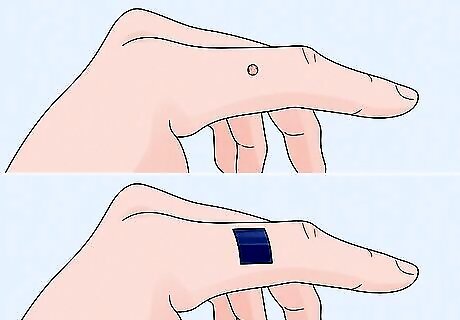
Put a small patch of duct tape over your wart to seal out air. It may sound weird but putting duct tape on a wart is a tried-and-true method for healing up these pesky little growths. Cut out a small piece of duct tape and stick it on your skin, directly over the wart. Make sure your skin is clean and dry before you put the duct tape on, since this will help it stick better. Covering your wart with duct tape will block out air and sunlight and irritate the wart. The irritation then causes your immune system to attack and kill the wart tissue. In a lot of cases, this treatment is enough to kill the wart without any need for medical treatment. Keeping your wart covered will also help prevent you from spreading the virus that causes warts to other people (and to other parts of your own body).
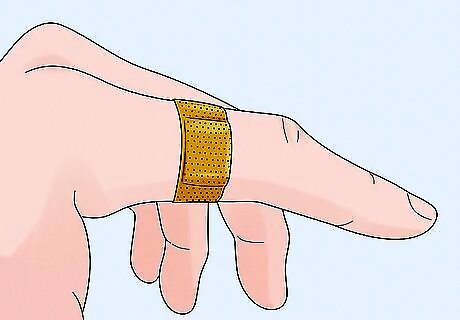
Conceal the duct tape under a bandage. While tape will cover up your wart, you may be less than thrilled about having an obvious piece of duct tape on your body. To hide the duct tape, cover it up with a band-aid, a gauze bandage, or a bit of medical tape. For a more subtle appearance, use flesh-colored medical tape or a self-adhesive bandage that’s similar to your skin color.
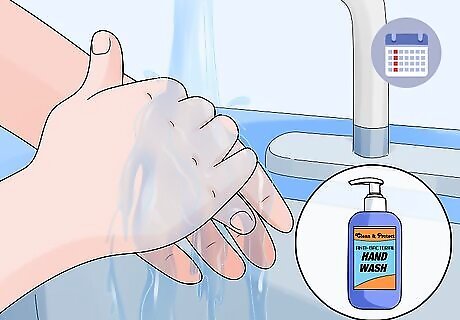
Wash the skin under the duct tape once a week. Every 4-7 days, take the tape off your wart. Wash the area with soap and water to clean it thoroughly, and gently rub away any dead or peeling skin with an emery board. Let the area air out overnight or for at least 12 hours before you put on a new piece of duct tape. Eventually, this treatment should start to wear away the top layer of skin where the wart is located and leave you with fresh, healthy skin underneath.
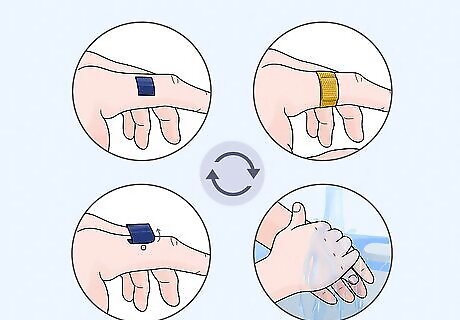
Repeat the treatment for up to 8 weeks or until your wart heals. The duct tape treatment takes time, so don’t lose hope if you don’t notice a difference right away! Keep applying the tape for at least 4 to 6 weeks. If you still don’t see any improvement, keep trying for up to 8 weeks. If your wart still isn’t improving after 8 weeks, try a medicated treatment or talk to your doctor or a dermatologist about other options, like cryotherapy (freezing the wart off with liquid nitrogen).
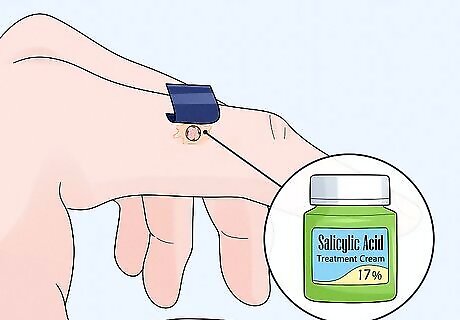
Combine duct tape with a salicylic acid cream for stronger results. 17% salicylic acid cream is an effective treatment for warts that works even better when you use it along with duct tape. Apply enough cream to cover the entire wart, then let the area dry before covering it with a piece of duct tape. Once or twice a week, take off the tape and wash the area, then rub the dead skin away with an emery board, nail file, exfoliating washcloth, or pumice stone. Keep trying this treatment for up to 2 months, or until your wart heals up. Try soaking the area in warm water for 10 minutes to soften up the dead skin before scrubbing the wart. Salicylic acid is a pretty gentle treatment, but sometimes it can cause mild side effects, such as skin irritation or stinging. See your doctor if you have more serious side effects, such as widespread hives or itching. Get emergency medical care if you have signs of a severe allergic reaction, such as difficulty breathing or swelling of your face, mouth, or throat. Some people recommend using apple cider vinegar or tea tree oil as alternatives to salicylic acid, but there’s not a lot of science to back up these home remedies.
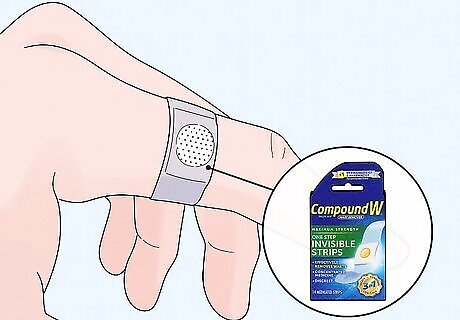
Use a medicated wart bandage for a more discreet cover-up. If you’re not happy about the idea of having a patch of duct tape on your skin for weeks, look for a package of medicated wart bandages in your local drug store. These look like round patches or regular band-aids, and they’re typically medicated with salicylic acid. Follow the instructions on the package to determine how long to use the patch and how often to change it. A few popular brands include Dr. Scholl’s Clear Away Wart Removers, Compound W Medicated Strips, and Curad Mediplast Corn, Callus, and Wart Remover. Some wart patches or bandages are clear, so they don’t show up as much against your skin. Alternatively, look for flesh-toned patches that match your skin color. You can also get special cushioned patches to treat painful plantar warts (warts that grow on the bottom of the foot).
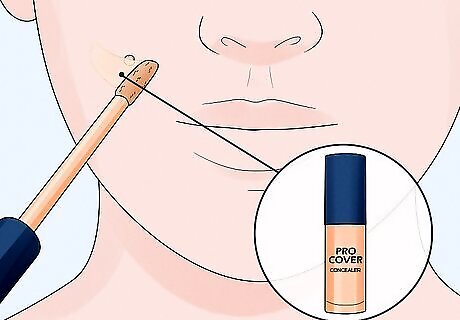
Cover a wart on your face with concealer for a quick fix. Since warts can spread, dermatologists recommend treating them rather than just trying to hide them. However, if you have a wart on your face that you want to hide in a hurry, using makeup might work. Apply a full-coverage foundation to your clean, moisturized skin, then tap on a thin layer of concealer to make your wart less obvious. Avoid piling on too much makeup, since it can cake up on warts and other blemishes and make them look more obvious. If the wart looks reddish, use a color-correcting primer or concealer that's either green or yellow-based. If you use makeup on a wart, always clean your brushes thoroughly afterwards to keep the infection from spreading. Never share makeup tools or other personal items with others while you have a wart.
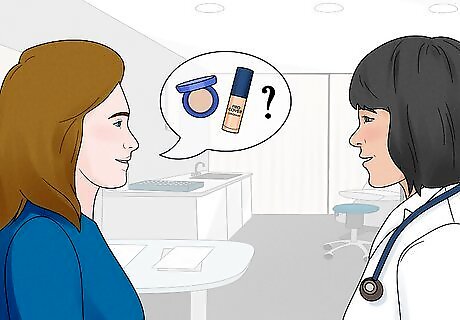
Ask your doctor before applying makeup after having a wart removed. If you’ve recently had a wart removed by your doctor or dermatologist, ask them when it’s safe to use makeup on the area. They may ask you to avoid applying makeup, lotion, or other cosmetic products until it’s completely healed, which usually takes about 10 days. Once the wound is mostly healed, protect it with sunscreen that has an SPF of at least 30 to prevent scarring or discoloration. You can also use a concealer or foundation with sunscreen for extra coverage and protection.
Treating Warts
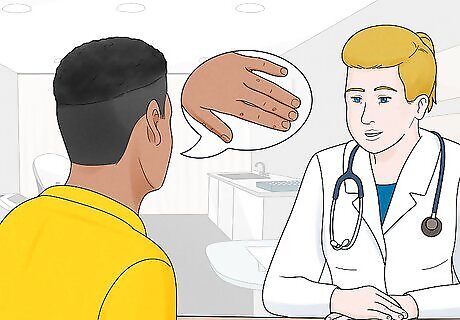
See your doctor if you’re concerned about your wart or it isn’t healing. Most warts heal up on their own in a few months, and home treatments like duct tape can speed up the process. However, if home treatments aren’t working or if your wart is really bothering you, call your doctor. They can suggest medical procedures to get rid of the wart faster. Call your doctor right away if you find a growth on your skin and you aren’t sure what it is. While it’s probably nothing to worry about, it’s important to make sure you’re not dealing with something more serious, like skin cancer.
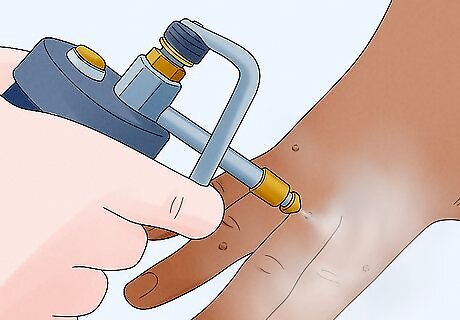
Ask about cryotherapy to quickly freeze off your wart. Cryotherapy is one of the most common treatments for warts. For this procedure, your doctor or dermatologist will freeze the wart with a small amount of liquid nitrogen. Over the next week or so, the dead, frozen wart tissue will peel away and fall off. Talk to your doctor about whether this therapy is appropriate for your wart. Cryotherapy may be more effective when it’s combined with a medication, such as a salicylic acid cream. Unfortunately, this treatment can be a little painful, and it might leave a blister or discoloration in the area where the wart was. Talk to your doctor about ways to minimize these side effects. You may need to return for a few treatments to completely get rid of your wart.
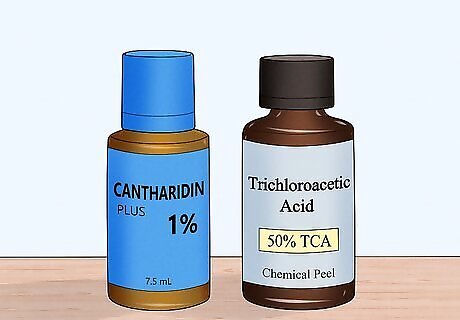
Try stronger medications if freezing or salicylic acid aren’t working. If you have an especially stubborn wart, don’t worry—there are other treatments you can try! Ask about using a prescription-strength topical medication like cantharidin or trichloroacetic acid to kill the wart tissue. Cantharidin causes a blister to form around the wart. Your doctor will apply the medication to the wart in their office, then have you return in a few days so that they can cut off the dead tissue. Trichloroacetic acid is stronger than salicylic acid, so it can burn away a stubborn wart faster. Your doctor will shave off some skin from the surface of the wart, then apply the acid. You may need several treatments over the course of a few weeks. These treatments can cause mild side effects, such as burning and stinging.
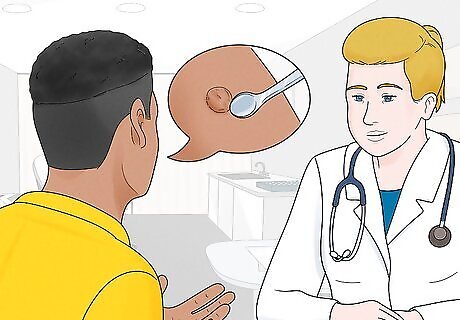
Discuss surgical removal for hard-to-treat warts. Depending on the type of wart, where it’s located, and how hard it is to treat, your best option might be to have the wart removed more directly. Ask your doctor about having the wart excised (cut out) or removed with electrosurgery or curettage. Curettage involves scraping the wart tissue away with a sharp surgical tool. During electrosurgery, your doctor will burn the wart away with an electric current. These treatments might sound a little scary, but don’t worry—your doctor will give you a local anesthetic to numb the area first. For especially hard-to-treat warts, your doctor might recommend alternative treatments, such as laser treatments, chemical peels, or injections of medications that may kill or shrink the wart.


















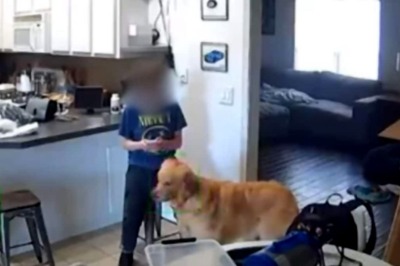
Comments
0 comment